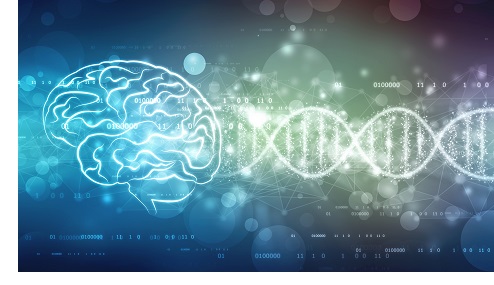When It Comes to Your Genes, Knowledge is Power
 Want to discover some truly captivating reading? Have your DNA analyzed and you’ll get an easy-to-read translation of the genetic code that makes you, you.
Want to discover some truly captivating reading? Have your DNA analyzed and you’ll get an easy-to-read translation of the genetic code that makes you, you.
23andMe is an American-based personal genomics company that for $200 out-of-pocket cost (not covered by health insurance) will do a comprehensive analysis of your DNA.
To be transparent, I have no financial relationship with 23andMe, other than ordering kits for all seven of the people in my immediate family. Then I had to badger each of them until they spit a few milliliters of saliva in a little test tube and sent it back in a self-mailer box supplied by the company. It takes about a month until you get an email with a link to your genetic analysis.
When you go to the 23andMe website and sign in, you will find a treasure trove of useful personalized genetic insights and fascinating information about your ancestry and potential future health issues.
The information is all explained with cool graphics and suggestions about precise steps that will help you to maintain ideal health as the years go by. I also love that 23andMe continually updates their database and regularly re-analyzes your DNA, probing for important additional genes without asking for more saliva or more money.
For instance, the precise make-up of my ethnic ancestry has morphed through the years as 23andMe has refined their algorithms. Currently, I’m 61% Irish, 25% Norwegian, 10% Scottish/English, 3% French, and 1% Native American—though I’m sure the mix may change again as more data accumulate.
23andMe has been doing genotyping since 2006, and by now has analyzed the DNA of over 12 million people. This is a direct-to-consumer genetic test that screens for hundreds of genes that code for specific traits, conditions, or diseases, including over 55 health reports that have been approved by the U.S. Food and Drug Administration (FDA).
These reports will tell you, for instance, if you have an increased risk for Alzheimer’s disease, macular degeneration (a preventable form of blindness), breast cancer (via BRCA variants), Parkinson’s disease, or diabetes, just to name a few. It will also tell you precisely where and when your ancestors lived, and whether you’re likely to have any number of traits such as early hair loss, stretch marks, muscular potential to be an elite athlete, fast metabolizer of caffeine, light sleeper, fear of heights, freckles, and facial flush with alcohol.
If you grant 23andMe permission to do so, it will give you names of DNA relatives who are directly related to you, such as a parent, with whom you would share 50% of your DNA, all the way down to a distant cousin, with whom you might have only 0.08% shared DNA. I have 1,500 relatives on my list so far. Be warned, this is probably the most potentially fraught aspect of precise DNA analysis. Many people discover blood relatives on close-by limbs of their family tree who they never knew existed until they had their genome analyzed.
A substantial portion of people believe that they would rather not know about diseases for which they might be at increased risk of developing in the future. This ostrich strategy, or “head-in-the-sand” approach is a natural tendency. In scientific jargon this is a cognitive bias that makes us prefer to avoid information which is potentially unpleasant. But forewarned is forearmed—when you know about a potential problem or disease that you are predisposed to, you can take proactive steps to avoid coming down with this condition.
My perspective is that “genes load the gun, but lifestyle/diet pulls the trigger.” In other words, your genes are virtually never your destiny; nearly always there are things you can do to influence whether those genes get expressed— that is to become activated.
And let’s be clear, we all have issues, whether you know about them or not. Choosing to remain “in the dark” about hidden landmines on the road of life seems unwise to me. And in the 21st century, this kind of genetic information will be increasingly relevant and necessary for staying healthy.
For example, 30 years ago I figured out that I have one copy (allele) of the C282Y gene that predisposes to hemochromatosis, a disease where the affected person stores too much iron. This can cause liver disease, heart failure, and diabetes. If I had two copies of that specific hemochromatosis gene, I would be at an even higher risk, but even with one allele, I noticed that my iron and ferritin (measure of stored iron) levels tended to run high. So, for three decades I have given blood about four times each year. By now I’ve given over 100 pints of blood at the Community Blood Center of Kansas City, and my ferritin stays low normal—just where I like it to be.
In my opinion, 23andMe is a great value in modern health care testing; right up there with a $50 Cardioscan—the high-speed CT scan that screens for calcified coronary plaque.
Nuanced genotyping will enable you to understand and benefit from the intriguing and diverse things that your DNA has to say about you based on your unique genetic make-up.
Nobody’s perfect. Figure out what your vulnerabilities are and do things to protect yourself. A survey of people who underwent genetic screening via 23andMe revealed that in response to their genetic findings, 76% reported making healthier lifestyle choices, 55% reported eating a healthier diet, 51% reported setting new personal health goals, and 45% reported increasing their exercise.
In Good Health,
James O'Keefe, MD, FACC



